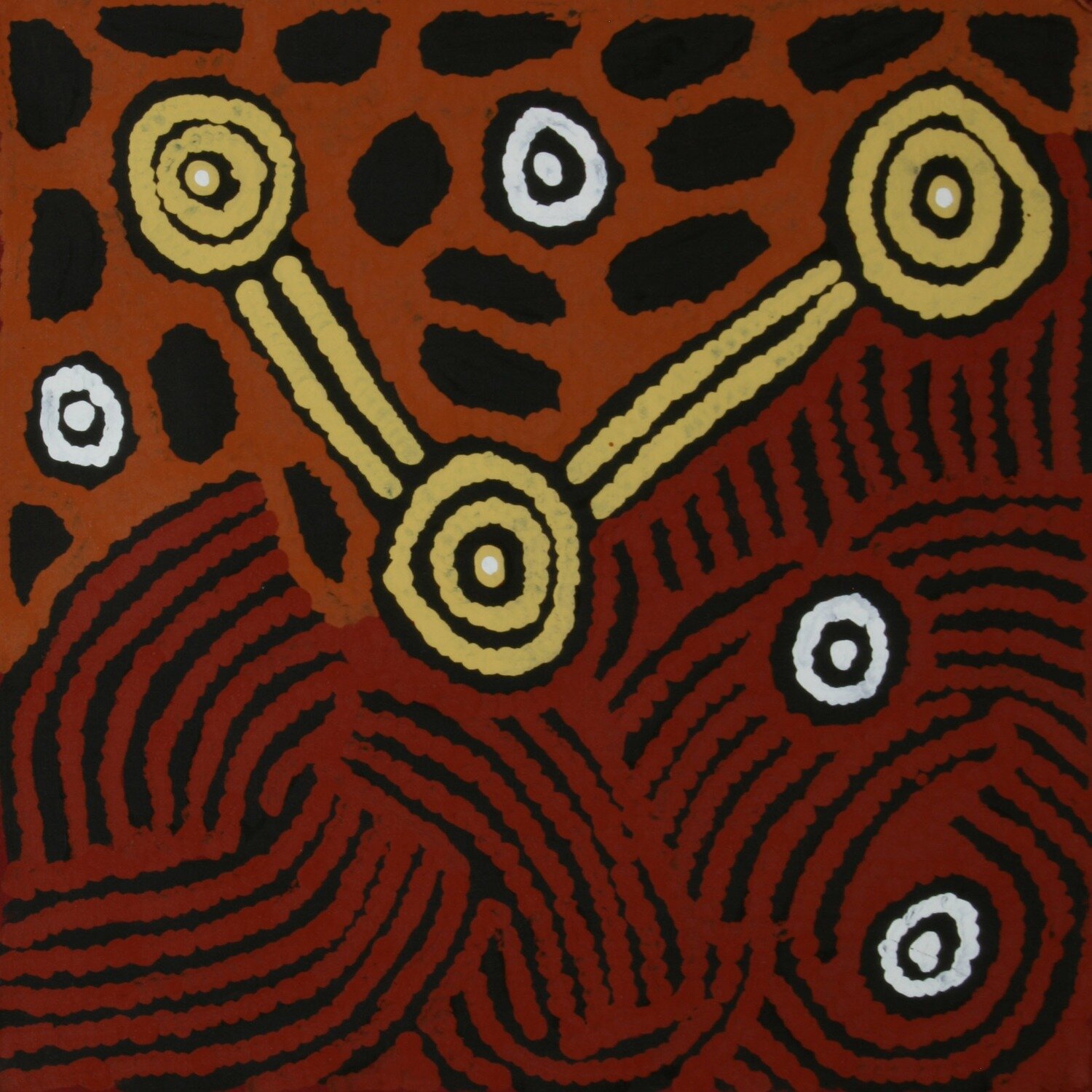Minyma Tingari (Women of the Tingari), 2001 by Elizabeth Marks Nakamarra 61x61cm 6330EM
Minyma Tingari (Women of the Tingari), 2001 by Elizabeth Marks Nakamarra
In "Minyma Tingari (Women of the Tingari)," Elizabeth Marks Nakamarra uses an individualistic style to narrate the stories of the Tingari ancestors, who traveled vast distances performing rituals that shaped the land formations.
The natural environment is characterised by through curved lines and stratified lines which are worn as body paint designs by women during sacred ceremonies. The concentric circle symbolises the ceremonial site, while small round shapes represent the fires around which women prepare for ceremonies. Larger solid shapes depict areas where women grind ochre for body paint, and curved shapes represent windbreaks made from branches to protect against the harsh desert wind.
Elizabeth Nakamarra Marks began painting in the mid-1990s, focusing on women’s sacred stories, emphasizing their roles as healers and providers in Luritja society. Born on August 12, 1959, she is the niece of renowned Papunya Tula artist Johnny Warangkula. She was promised in marriage to the celebrated artist Mick Namarrari Tjapaltjarri, with whom she had three children.
Raised in Kintore and Mt Liebig, NT, Elizabeth studied at Bachelor College in Alice Springs and served as a council member in Kintore. Her work, deeply rooted in the Dreaming stories of the Tingari Cycle, captures the spiritual journey and rituals that created the land’s features. Known for her Escher-like style, Elizabeth’s paintings often use a single color with a contrasting hue on a black background, creating dynamic line patterns.
Elizabeth's works have gained international recognition. She was named in the 2004 Australian Art Collector's Top 50 Most Collectible Artists. Elizabeth Nakamarra Marks continues to live and paint in the Gibson Desert, preserving and celebrating her rich cultural heritage.
GALLERY GONDWANA
ABN: 75 009 652 046
All prices displayed in AUD, GST included.
Gallery Gondwana acknowledges the First Peoples of this land and recognises their continuous connection to culture, community and Country.
CONTACT US
+61 417 75 74 75
+61 417 27 44 31
roslyn@gallerygondwana.com.au
PO Box 3770, Alice Springs NT 0871 Australia
Vatu Sanctuary
Saturate yourself and be inspired by the power of Aboriginal art in a living gallery environment.

All Rights Reserved | Gallery Gondwana
